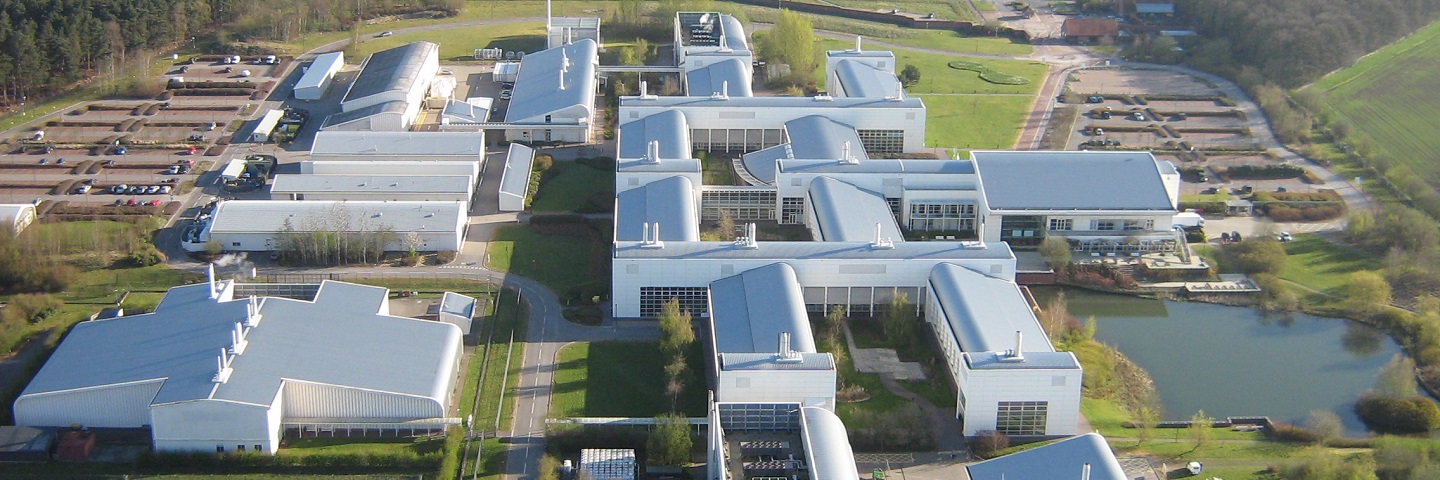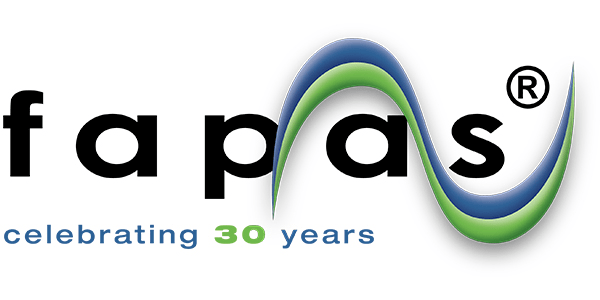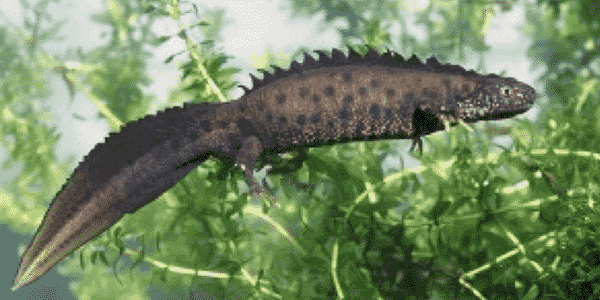
Visit our other sites
-
Fapas - Proficiency Testing
Globally recognised provider of proficiency tests, running over 400 tests annually across an extensive range of matrices and analytes
-
Great Crested Newts Testing
A single sample taken by an ecologist at any time during the newt breeding season can determine their presence or absence, saving you time and money
Browse through a selection of videos presenting Fera's products, services and scientific aims.

Fera in Focus: A History
Webinars (Food Contact Materials, Bee Studies & Aged Sorption)
Food Contact Materials Webinar
Can Coatings Case Study
At Fera we carry out food packaging testing and contact materials testing to ensure that your products comply with the appropriate regulations for food contact materials. Our work involves targeted and non targeted analysis of known and unknown migrants. Analysis can be carried out in complex matrices (foods, food simulants and food contact materials and articles) utilising a range of advanced chromatographic and mass spectrometric techniques.
Since the recording of this webinar Dr Malcolm Driffield no longer works for Fera Science, but if you would like to get in touch to discuss our food contact services then our team will be happy to assist with your enquiry. Contact us today.
Find out more about our Food Contact Materials Testing
Bee Ecotoxicology
Bee Studies
Our research expertise and scientific resources can help you to test your plant-protection products for their effects on bee survival, development and behaviour – helping you to develop products that are safe for bees and other pollinators. We work closely with the National Bee Unit, giving us access to a huge range of resources to support your risk assessments, including more than 150 colonies of honey bees and a highly skilled beekeeping team.
Find out more about our Bee Studies
Aged Sorption Webinar
Work with the people who developed the guidelines
In the webinar, Dr. Wendy Van Beinum, leading expert in Aged Sorption from Enviresearch and Dr. Chris Sinclair, renowned Environmental Fate specialist from Fera discussed and demonstrated how Aged Sorption studies for pesticides should be conducted, analysed, and used in regulatory assessment and discuss their inclusion in higher-tier testing for groundwater.
Find out more about Aged Sorption
The largest mesocosm in Europe
Flying Over the Build of the New Facility
As at the end of June 2018
Working with commercial companies to accelerate the process of bringing safer and more effective plant-protection products to market. E-Flows is a state-of-the-art system designed to provide plant-protection companies with a test bed of streams, ditches or ponds that represent edge-of-field surface waterbodies. Its purpose is to accelerate the process of bringing new high-value products to market. It will provide flow-through systems for controlled exposure scenarios with the highest
reliability rating.
Find out more about the mesocosm - E-Flows
3D Animation of E-Flows
Fly-through of the Mesocosm
CHAP's ground breaking project, supported by Innovate UK and developed, designed, managed & operated by Fera will create 60 realistic streams, each up to two metres wide and ten metres long, each having a continuous matched supply of aged fresh water, and all being independent of each other. This provides a facility that is a realistic, but closely controlled, facsimile of edge-of-field surface waters that can be exposed to novel products in a real-world scenario to ensure the safety of our aquatic habitats. This unique facility represents a leap forward in the support of Higher Tier Risk Assessments.
Find out more about the mesocosm - E-Flows
Proficiency Testing - Webinars
Wine Proficiency Testing Webinar 2019
During the webinar we explored how proficiency testing can provide an effective tool for understanding quality control throughout the wine industry.
Find out more about Fapas - Proficiency Testing
Wine Proficiency Testing Webinar 2018
Find out how Fera is helping wine producers meet consumers demand for more detailed information on the overall process from the grape to the bottle.
Find out more about Fapas - Proficiency Testing
Proficiency Testing - WebCasts
Charting Proficiency Testing Results in Long Term
Hear more about charting proficiency testing results in long term and why you would want to do this.
Find out more about Fapas - Proficiency Testing
Fapas Website Overview
Helping you to use your Fapas account and the best ways to search the Fapas website.
Find out more about Fapas - Proficiency Testing
Proficiency Testing - WebCasts
Whats' Involved
Extended Version
Proficiency testing is an essential part of laboratory quality assurance and participation is an expected requirement of ISO 17025 accreditation. Fapas proficiency testing provides an independent assessment of your laboratory performance and compares your results to laboratories worldwide.
Find out more about Fapas - Proficiency Testing
Quality Control & Reference Materials
Reference Materials (RMs) have a much higher degree of characterisation than PT or QC materials with a defined chain of traceability. RMs undergo formal stability testing for both short-term and long-term applications. RMs have an associated datasheet which lists the reference values and their expanded uncertainty U.
Learn More About Our Reference Materials
Proficiency Testing - WebCasts
Introduction to Proficiency Testing
Fapas proficiency testing provides an independent assessment of your laboratory performance and compares your results to laboratories worldwide. Taking part in our proficiency tests gives you confidence in your laboratory equipment, methods and staff, and assurance that you are delivering the quality results demanded by your customer.
Learn About the Specific Proficiency Tests Available
Proficiency Testing - Sample Stability
The homogeneity of sample’s comparison is very significant. It’s critical for laboratory comparison and for laboratory proficiency testing. We guarantee that the unsatisfactory results in proficiency testing will not impute to the changeability among the samples and the sample itself.
Find out more about Fapas - Proficiency Testing
Proficiency Testing - WebCasts
Results & Method Submission
This webcast takes you through how to submit your results to Fapas for the interlaboratory comparisons.
Register or Log In to Your Fapas Account
Use of Blank Materials
Blank materials are ideal to ensure effective calibration curves are created. Blank materials from Fapas make use of real food matrices to provide the key insights into your routine testing abilities you require. These can be used to maintain the level of accuracy required to satisfy both your customers and regulators of your testing capabilities.
Find out more about Fapas - Quality Control Materials
Proficiency Testing - WebCasts
Quality of Data Analysis
For nearly 30 years, Fapas consultants have provided world class time-proven data-driven process improvements or processes to companies leading to high performance.
Learn More About Our Bespoke Proficiency Testing
Interpretation of Assessments
Each year, Fera issues thousands of Fapas Proficiency Test
certificates and produces hundreds of PT reports, which
participants use to determine their laboratory practices to
improve the quality of analytical data. PT reports capture
detailed statistical method information to identify trends
in analyses, which can lead to standards being withdrawn.
Learn More About Fapas
Proficiency Testing - WebCasts
Method Dependency
The statistical analysis and performance assessments are
entirely in the hands of the PT provider and the participants
receive their z-score1 (or other assessment). There is no
attribution to an individual or (usually) method parameter,
the statistics are robust due to a large dataset and objective
criteria. The PT (proficiency testing) results can be used to support accreditation
but it is only a single instance of QC. Long term trends must
be built up over many more similar PTs, possibly over a
period of several years.
Why not read more about our frequently asked questions on PTs
Apprenticeships & Careers at Fera
Victoria Peck
GLP Study Director
Vic enjoys the challenge of the difficult compounds we study here at Fera, really problem solving and finding that unique solution that works specifically for our clients & partners.
Find out more about our careers at Fera
Damian De Marzo
Assistant Invertebrate Biologist
Damian has worked for Fera for over 17 years based in the entomology team, his work is wide ranging from maintaining cultures to running assays to processing & identifying crop pests from our in-field diagnostic systems.
Find out more about careers at Fera
Apprenticeships at Fera Science
Kailum Brown and Laura Faulkner
Kailum Brown, Lab Assistant, and Laura Faulkner, Assistant Scientist, are both apprentices at Fera Science. The Fera apprenticeship programme provides 24 months of hands on laboratory experience.
Find out more about our careers at Fera
Kailum Brown
Apprentice Laboratory Assistant
Kailum has learnt to apply original thinking, making a positive impact on the businesses success, which will leave him well placed for future employment across the science sector. .
Fera
Business Inspired Growth
We are excited about the prospect of bringing more and more apprenticeships into Fera, and helping them get their careers of to a strong start.
Find out more about our careers at Fera
We are working with the Tubercare initiative from Certis
Importance of Virus Testing
Adrian Fox, Principal Plant Virologist at Fera Science, explains the methods used in the lab to determine virus levels during the process of seed potato virus testing. He also compares direct molecular diagnostics and 'grow out' testing.
He then goes on to highlight the importance of virus testing in order to minimise yield reductions and maximise marketable yield.
View our Potato Tests
Tuber Disease Identification and Assessment
Our scientists support growers in all areas of agriculture and horticulture through plant health diagnostics, seed testing through to food authenticity and packaging analysis.
In this video, Fera plant diagnosticians explain the process of tuber disease identification and the importance of accurately identifying seed potato pathogens.
View our Potato Tests
Learn More About Our Plant Clinic
Fera at Cereals 2017
Integrated Crop Management
Toby Reich at Cereals 2017
Toby presents an overview of Fera's Integrated crop management: Pathogen Diagnostics, Insect Monitoring, Nematode Testing, and Soil Testing.
New: Our Integrated Crop Management Service
Fera UAV Services
Lee Butler at Cereals 2017
Lee gives an overview of the Fera UAV services.
Our UAV Services
Fera and Bee Health
FutureHive by Fera - Protecting our Essential Pollinators
Bees and Plant Protection Products
Selwyn Wilkins
Selwyn speaks about the importance of bees and the safety of routinely applied plant protection products.
Bee Ecotoxicology Services
Bee Health - Maximum Yield
Giles Budge
Giles speaks about the relationship between bees and crop health and yield.
Chemical Regulation Services
Sustainable Food Supply Chain
Glyn Jones
Glyn is an environmental economist at Fera, here he describes sustainability within the food supply chain, and the importance of protecting pollinators such as bees, as a part of this.
Environmental Economics Services
Fera - Developing Guidelines for Plant Protection
Selwyn Wilkins
Selwyn gives an overview of the range of services Fera can provide to agro-chemical companies.
Ecotoxicology Services
Fera has many years of experience in running GLP compliant tests to assess the risks posed by plant protection products to bees. We are active participants in many testing method working groups and ring tests (e.g. ICPPR non-apis working groups). This means that we are at the forefront of current bee testing. We also work closely with the National Bee Unit which gives us instant access to a range of resources to support our studies, including 150+ colonies of honey bees and a highly skilled beekeeping team. Please see below a selection of our capabilities – this is not an exhaustive list and we can adapt current test methods or use bespoke test design to meet your specific data requirements.
Fera Technologies
We have a wide range of technologies developed and used at our Sand Hutton Site
The Thomson Suite
State-of-the-Art Mass Spectroscopy at Fera
The Thomson Suite is one of the largest facilities of its kind in the UK. It is a bespoke laboratory running to GLP quality standards that houses 30 state-of-the-art mass spectrometry instruments. It was named in honour of Sir Joseph John Thomson (1856 - 1940), a British Nobel Prize winning physicist, whose 1913 experiments are credited with the invention of mass spectrometry.
The Thomson Suite
Bench Top NMR
James Donarski
James speaks about his research into method transfer high resolution mass spectrometry and high field NMR spectroscopy to benchtop instrumentation.
This video was filmed at RAFA 2015, by SelectScience
Nuclear Magnetic Resonance (NMR) Spectroscopy
IC-MS - Analysis of Polar Pesticides
Stuart Adams
Stuart Adams, PhD, Senior Analytical Chemist, Fera Science Ltd, UK, describes a newly developed method that combines ion chromatography with mass spectrometry for the detection of polar pesticides in food samples to help assess food safety.
(Video by SelectScience)
Pesticide Residue Testing Services
Fera Products and Services
An overview of select Fera products and services
OriGen - Traceback Service
Ed Haynes
Food safety is a key driver of consumer behaviour. Recent news stories
show the potential impact of food safety scares on consumer behaviour.
Our latest new service for food manufacturers, OriGen is an innovative
process which uses Whole Genome Sequencing (WGS) to identify the source
and trace the route of bacterial contamination, allowing food
manufacturers to find the cause of the problem and ensure it is dealt
with properly. It is a key new tool in the protection of the integrity
of the UK’s food supply chains.
OriGen: Traceback Service
Introducing HorizonScan
Barry Hilton
HorizonScan monitors commodity safety and integrity issues worldwide, collecting data daily from more than 100 food safety agencies and other reliable sources, delivering timely alerts on emerging food safety issues. It can help you to meet all consumer and regulatory demands for transparency and accountability across the ingredient supply chain, by identifying potential food safety threats before they become a problem.
HorizonScan
Whole Genome Sequencing Webinar
Ed Haynes
Dr. Edward Haynes, FSA-Fera Joint Research Fellow in Molecular Epidemiology discusses foodborne pathogens and Whole Genome Sequencing.
OriGen - Traceback Service
Introducing GelSpec
Helen Grundy
GelSpec - enabling lower detection limits with our more sensitive
LC-MS/MS equipment which mean that gelatin speciation is now possible at
even lower levels.
GelSpec

Copyright © 2025 Fera Science Limited (“Fera”). All rights reserved.
For further information about how Fera uses any personal data collected from you, please see our Privacy Notice at www.fera.co.uk/privacy-policy.

